|
.jpg) Jingle Bells, Winter tales, Jingle Bells, Winter tales,
The snow is on its way.
Oh what fun it is to see
The birds have come today-ay.
Jingle Bells, Winter tales
Time to put out seed,
Water, peanuts, and the suet
It’s everything they need.
Winter in the Backyard
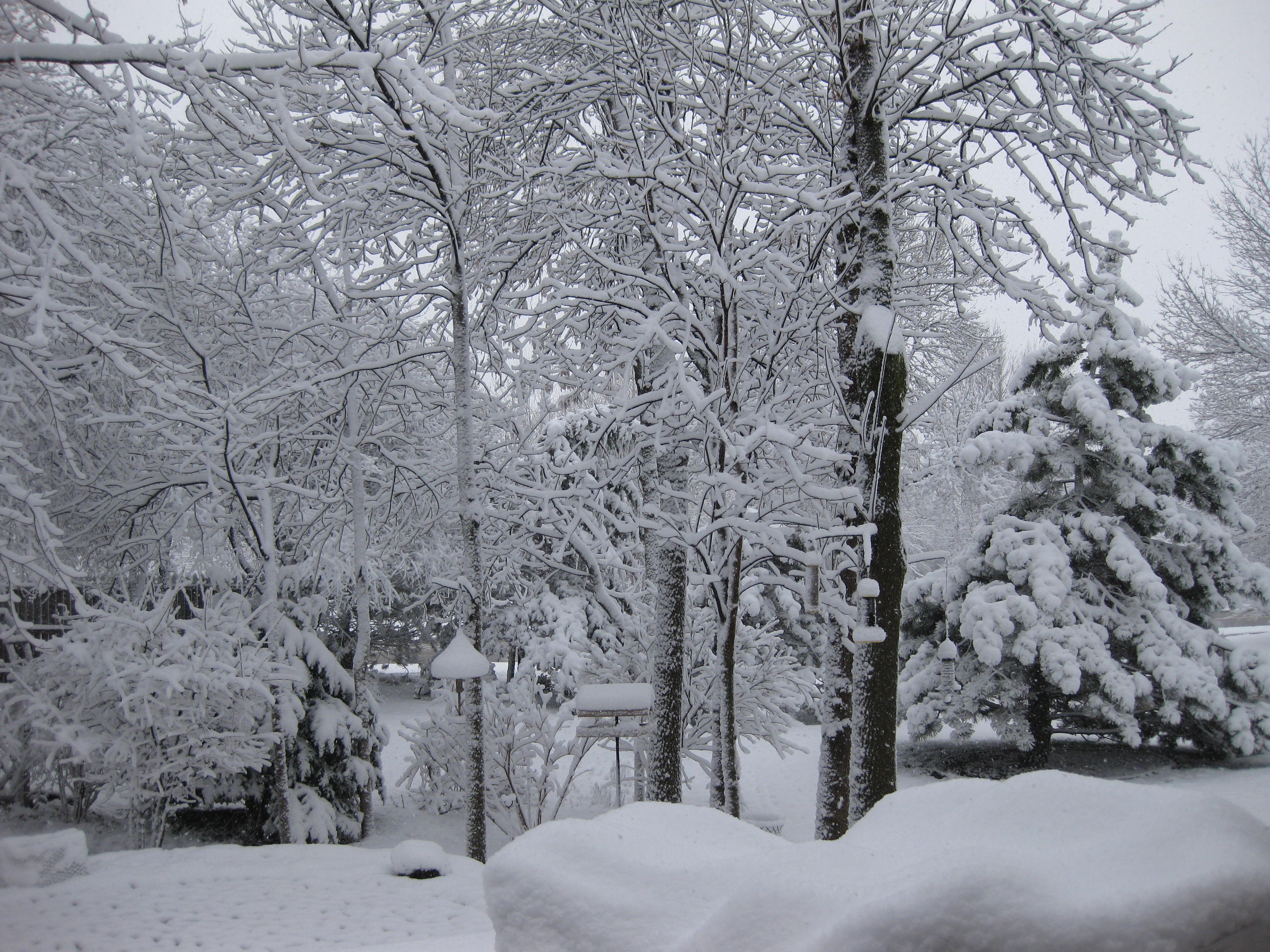
We’re noticing the days are definitely getting shorter, the temps are going lower and one of these days we may wake up to the scene in the left photo. With all the extremes we’ve had with our weather in 2012, who really knows what this winter has in store for us. There have been Juncos in our backyard and the squirrels are hiding acorns in a vacated bird house – sure signs that winter truly is coming to Wisconsin. As the seasons change we will notice changes in our backyard birds and their habits. In order to find food more readily some species of birds will begin to travel in flocks. On cold nights they may co-habitat, finding a roosting box or empty house to snuggle together and share each others heat. Water will be harder to find and a heated bird bath will be a huge draw to your backyard. Birds will need more energy to keep warm so there will be more activity at suet feeders. The suet is basically fat and it helps produce internal heat. All in all, just as we prepare for winter by weatherizing our homes and pulling the heavy quilt and thicker jacket out of the closet, the birds and other backyard inhabitants are deciding where and how they will spend the next few months. Don’t forget they depend on you, especially at this time of the year. Food and water are harder for them to find – they are hoping you keep your feeders full for them.
Water to Survive
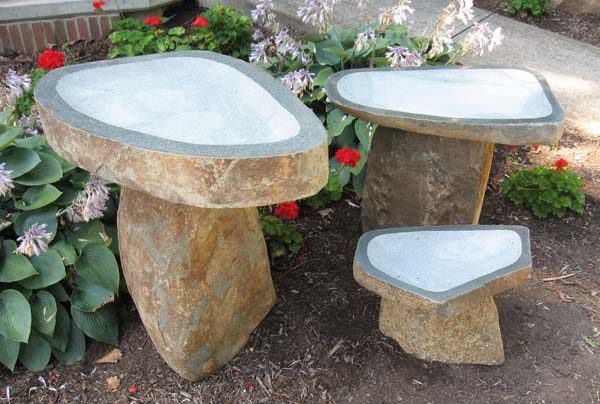
Fact: A bird bath is even more important in winter than in summer. Not all birds may come to your feeder, but ALL of them will need water.
Fact: A heated bird bath is not a spa for your birds; the water is just warm enough to be liquid instead of ice.
Fact: Heated bird baths and/or heated inserts for baths are thermostatically controlled.
Much of a birds’ energy is wasted searching out open water sources in winter. By providing a heated water source you'll not only be helping the birds, but you will also increase the variety of birds visiting your backyard. There are several winter options you have to offer water to your birds. First, simply add a bird bath heater insert to your existing bath. If you already provide water for birds during summer, just add one of these units to your birdbath or small pond and plug it in. A word of caution, not all bird baths can have water in them during the cold of winter. The material may crack with expansion and contraction. Concrete shouldn't have any water in it during winter. (The photo in this section is of our new granite bird baths. They can stay outside in the elements of winter and would accept a bird bath insert.) If you're not sure, the second option may be better for you. The second option is with a built-in heated bird bath. These are birdbaths sold as a complete unit with the heating element built into the bowl. There are a variety of styles to choose from. Some clip on to your deck railing and others are pedestal baths, usually placed close to the house for refilling convenience. In extremely cold weather, some ice may form around the edges, but there's always open water at least in the middle. Need a gift idea for a bird lover? How about a heated bird bath from Wildbird & Backyard?
Shelter for Warmth
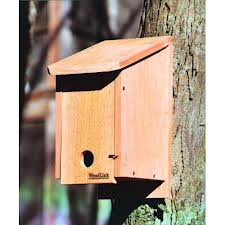
As long as birds have a sufficient supply of food and water, most should be able to weather the long, frigid winter days and nights. Their feathers work as insulation and they have the ability to control their own body temperature. It's called "Topar". During extreme cold weather they can lower their body temperature by up to 14 degrees each night to save energy. With all that said, they still hunt for a sheltered area to rest over night. This might be in a thick cedar or pine tree, a crevice among rocks or near a building, empty nest boxes or roosting boxes. With nest boxes, the holes are generally on the upper portion of the box. Because heat rises, heat escapes more readily out of that top hole. On a roosting box (pictured at left) the entry hole is on the bottom and less heat escapes. Birds of different species may all crowd together in that roosting box, sharing their body heat and staying alive. Inside a roosting box there are a series of perches (unlike an empty nest box) so there is plenty of room of many birds to roost. Small natural woven roosting pouches are also available, usually enough room for one bird. These are easy to mount on a fence, in a bush or tree, for example, and provide shelter from wind and cold. If we have a series of sub-zero days and nights, many birds are unable to survive. It's called survival of the fittest. Remember….food, water and shelter. Each one is as vital as the other.
Food for Energy
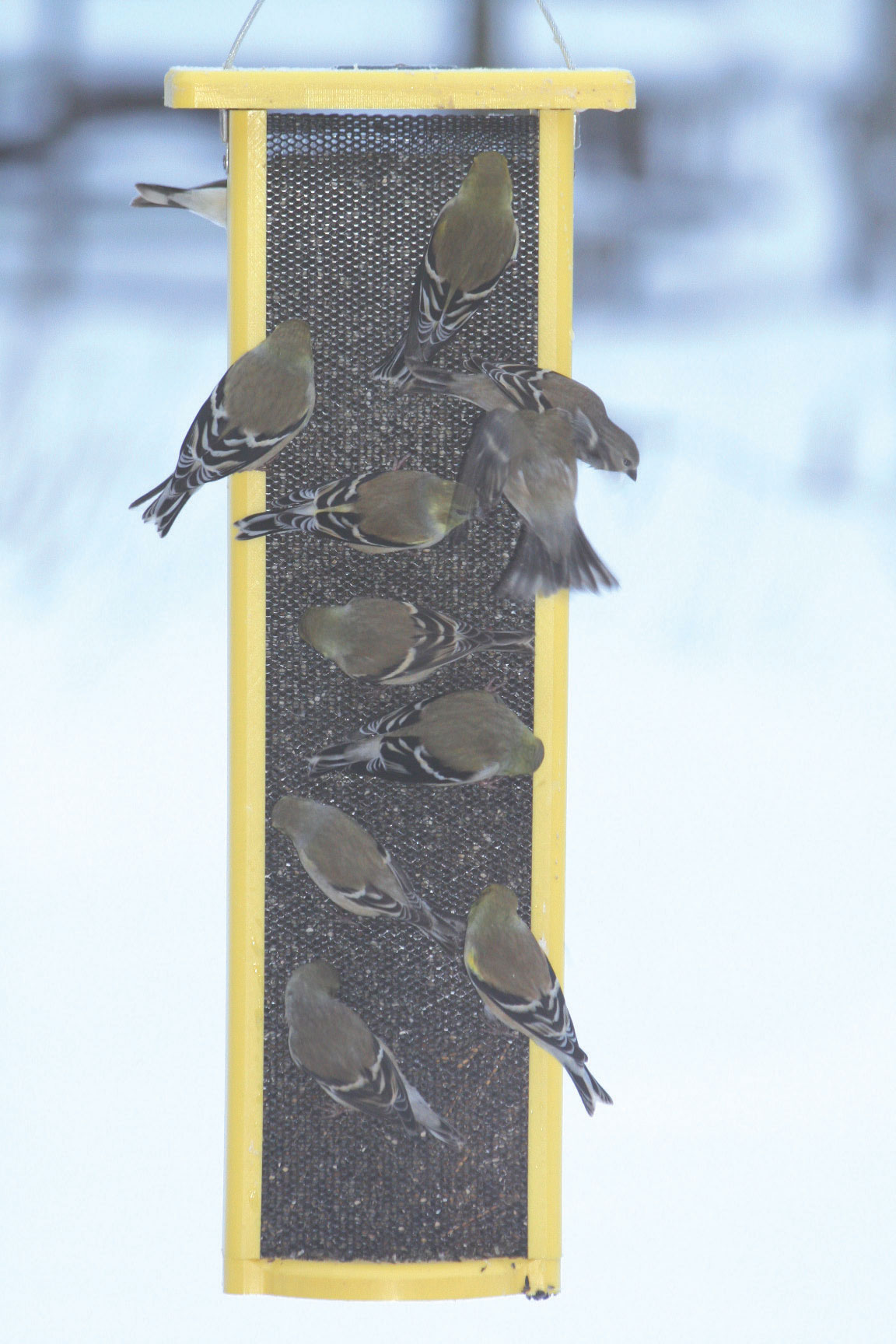
As winter approaches, you may need to change some of the foods you offer to birds. 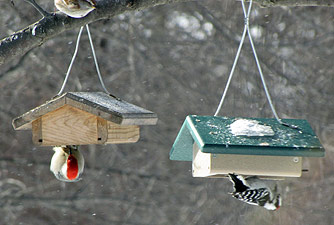 High calorie and high fat foods can be important. The type of feeder may also need to be changed as the birds visiting your feeder may be arriving in flocks. The flocks are formed for survival. Traveling in flocks, the birds are better able to find food and protect themselves from predators. Feeders should be located out of the wind. The east or southeast side of a house, close to trees is ideal. It is best to have a perching spot, such as a bush or tree for the birds to survey the feeding area and provide sufficient cover for safe refuge from predators, away from wind and weather. Black oil sunflower is a great overall seed to offer in the winter. It is high in fat and protein content and has a relatively thin shell. Suet is also a great food to offer many of the birds. Also high energy, its fat substance is invaluable in winter when insects are hard to find. Suet can be offered in many different ways: blocks to insert into metal cages, logs for placing into a feeder that resembles a tree trunk or limb, pre-formed balls or bells or in a spreadable form to spread directly onto a suet board. Peanuts are another great food. They too have high fat and protein levels and are often an ingredient in the suet. Peanuts are available either in or out of the shells. You can certainly shell your leftover holiday nuts and share them with the birds. Please avoid giving them any salted varieties. High calorie and high fat foods can be important. The type of feeder may also need to be changed as the birds visiting your feeder may be arriving in flocks. The flocks are formed for survival. Traveling in flocks, the birds are better able to find food and protect themselves from predators. Feeders should be located out of the wind. The east or southeast side of a house, close to trees is ideal. It is best to have a perching spot, such as a bush or tree for the birds to survey the feeding area and provide sufficient cover for safe refuge from predators, away from wind and weather. Black oil sunflower is a great overall seed to offer in the winter. It is high in fat and protein content and has a relatively thin shell. Suet is also a great food to offer many of the birds. Also high energy, its fat substance is invaluable in winter when insects are hard to find. Suet can be offered in many different ways: blocks to insert into metal cages, logs for placing into a feeder that resembles a tree trunk or limb, pre-formed balls or bells or in a spreadable form to spread directly onto a suet board. Peanuts are another great food. They too have high fat and protein levels and are often an ingredient in the suet. Peanuts are available either in or out of the shells. You can certainly shell your leftover holiday nuts and share them with the birds. Please avoid giving them any salted varieties.
Above the Snow
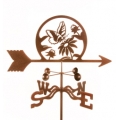  Over the next several months we'll spend more time looking out our windows and into our backyards than we'll actually spend being in our backyards. Not only is this a good time to plan our backyard design for next spring, incorporating bird-friendly trees, bushes and plants, but it also gives us time to plan for accent pieces. Come into Wildbird & Backyard, listen to the chirpping of the birds all winter and begin decorating your backyard. We offer statuary (angels, St. Francis, wolves, squirrels, bunnies, frogs, turtles, etc), beautiful wind chimes, wind spinners, weathervanes with your choice of theme, sundials, thermometers, rain gauges, poles, hooks, stepping stones, flags, stained glass designs of many sizes, and the list goes on. Your backyard isn't just feeders, bird houses and baths. It's your "outside room" and should be decorated to your taste. New selections are introduced all year long. So come in and plan you backyard at Wildbird & Backyard. Over the next several months we'll spend more time looking out our windows and into our backyards than we'll actually spend being in our backyards. Not only is this a good time to plan our backyard design for next spring, incorporating bird-friendly trees, bushes and plants, but it also gives us time to plan for accent pieces. Come into Wildbird & Backyard, listen to the chirpping of the birds all winter and begin decorating your backyard. We offer statuary (angels, St. Francis, wolves, squirrels, bunnies, frogs, turtles, etc), beautiful wind chimes, wind spinners, weathervanes with your choice of theme, sundials, thermometers, rain gauges, poles, hooks, stepping stones, flags, stained glass designs of many sizes, and the list goes on. Your backyard isn't just feeders, bird houses and baths. It's your "outside room" and should be decorated to your taste. New selections are introduced all year long. So come in and plan you backyard at Wildbird & Backyard.
Pretty, Practical and Great Gifts
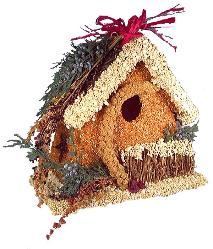 Back by popular demand, Wildbird & Backyard once again has cleverly Back by popular demand, Wildbird & Backyard once again has cleverly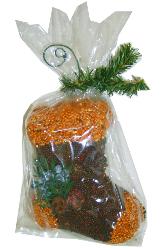 decorated bird houses covered with edible seeds. These are both a pleasure to look at and a food supply for your backyard birds. On the larger houses, once the seeds have been eaten the house can be used for shelter and nesting. It's a useable bird house! If it's not a house you're looking for we have many other whimsical and edible shapes: Christmas stockings, snowmen (large and small), Christmas trees, pecan wreaths and fruit and nut balls. These are such unique items, great for all the nature loving friends on your gift list. Shop early and snag the perfect house or shape. Supplies are limited. Click here for more information. decorated bird houses covered with edible seeds. These are both a pleasure to look at and a food supply for your backyard birds. On the larger houses, once the seeds have been eaten the house can be used for shelter and nesting. It's a useable bird house! If it's not a house you're looking for we have many other whimsical and edible shapes: Christmas stockings, snowmen (large and small), Christmas trees, pecan wreaths and fruit and nut balls. These are such unique items, great for all the nature loving friends on your gift list. Shop early and snag the perfect house or shape. Supplies are limited. Click here for more information.
Just for Fun
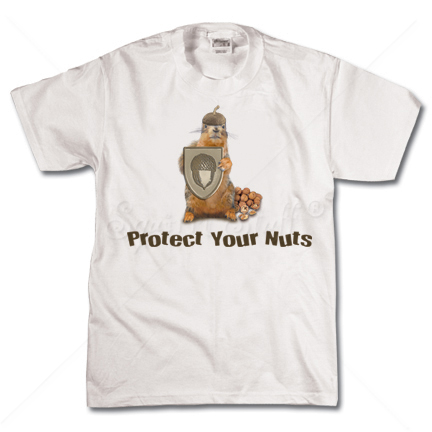 Looking for something that will bring smiles and joy, yet doesn't need to be placed in a backyard? We have T-shirts with zaney squirrels to tickle your funny bones. These shirts are the best! Several different styles are available; the shirts themselves are of good quality - sizes from Small to X-Large. Need other gift suggestions? Let us list a few suggestions: nature jigsaw puzzles, Scramble Squares and cribbage boards. Jewelry? We have a nice selection of bird and nature themed earrings. There are bird house kits, clocks with bird sounds, books, CDs, DVDs, wall art, bird wine bottle stoppers, solar chimes, binoculars, computer software and coffee table knick knacks. We just received a beautiful selection of winter-themed table art pieces, great for winter decorating. Come check out our selection of 'inside" gift ideas. And don't forget to pick up a nature themed gift bag to go with your purchase. Be sure to check out the coupons at the end of the newsletter. Coupons are good to the end of the year for both earrings and Scramble Squares. Looking for something that will bring smiles and joy, yet doesn't need to be placed in a backyard? We have T-shirts with zaney squirrels to tickle your funny bones. These shirts are the best! Several different styles are available; the shirts themselves are of good quality - sizes from Small to X-Large. Need other gift suggestions? Let us list a few suggestions: nature jigsaw puzzles, Scramble Squares and cribbage boards. Jewelry? We have a nice selection of bird and nature themed earrings. There are bird house kits, clocks with bird sounds, books, CDs, DVDs, wall art, bird wine bottle stoppers, solar chimes, binoculars, computer software and coffee table knick knacks. We just received a beautiful selection of winter-themed table art pieces, great for winter decorating. Come check out our selection of 'inside" gift ideas. And don't forget to pick up a nature themed gift bag to go with your purchase. Be sure to check out the coupons at the end of the newsletter. Coupons are good to the end of the year for both earrings and Scramble Squares.


The Cedar Waxwing is brown on top and pale yellow on its belly. It has a crest of feathers on its head and a black mask lined with white on its face. Its tail has a yellow tip. Some cedar waxwings in the Northeast US and Southeast Canada will have an orange tip on their tails. This color difference is caused by their having eaten the berries of an introduced species of honeysuckle while their tail feathers were growing. The male and female cedar waxwings look alike.
Their breeding territory runs from the southern half of Canada to the northern half of the United States. They are migratory with their winter range stretching from the United States and Mexico south to Panama. They are residents of Wisconsin throughout the whole year although we may not have the same flocks here in both summer and winter.
The cedar waxwings are very social birds. They are non-territorial and will often groom each other. They travel in flocks of 40 or more birds, can fly up to 40 miles per hour and fly at an altitude as high as 2000 feet.
Their habitat of choice is deciduous, coniferous, and mixed woodlands, particularly areas along streams. You may also find them in old fields, grasslands, sagebrush and even along desert washes. With the spread of ornamental berry trees in landscaping, the waxwings are increasingly common in towns and suburbs. In winter, Cedar Waxwings are most abundant around fruiting plants in open woodlands, parks, gardens and forest edges. Landscaping your yard with fruit-bearing trees and bushes will increase your ability to attract these beautiful birds.
This bird is frugivorous – a fruit eater. Most of its diet is made up of berries, especially in the winter, but in summer they supplement their fruit diet with protein-rich insects including mayflies, dragonflies, leaf beetles and spruce budworm. Berries play a large role in the cedar waxwing’s breeding, social and migratory behavior. Favorites are serviceberry, strawberry, dogwood, raspberries, mistletoe, juniper, mountain ash, honeysuckle, crabapple, hawthorn and Russian olive fruits. They will perch on a branch and pluck berries or they will hover in the air and grab berries. They will sometimes pass berries to one another as they perch in a line on a tree branch. Occasionally a cedar waxwing will become drunk or even die from eating berries that have fermented. In courtship the male does a hopping dance and passes berries or pieces of fruit to the female. If she is interested, she also will do a hopping dance and pass the fruit or berry back to the male. The pair may do this a number of times in a row until, typically, the female eats the gift. After pairs form, the female chooses a nest site and builds a nest of bark, twigs, moss and grass. The nest is usually made in a conifer tree.
Recent Contests, Recent Winners
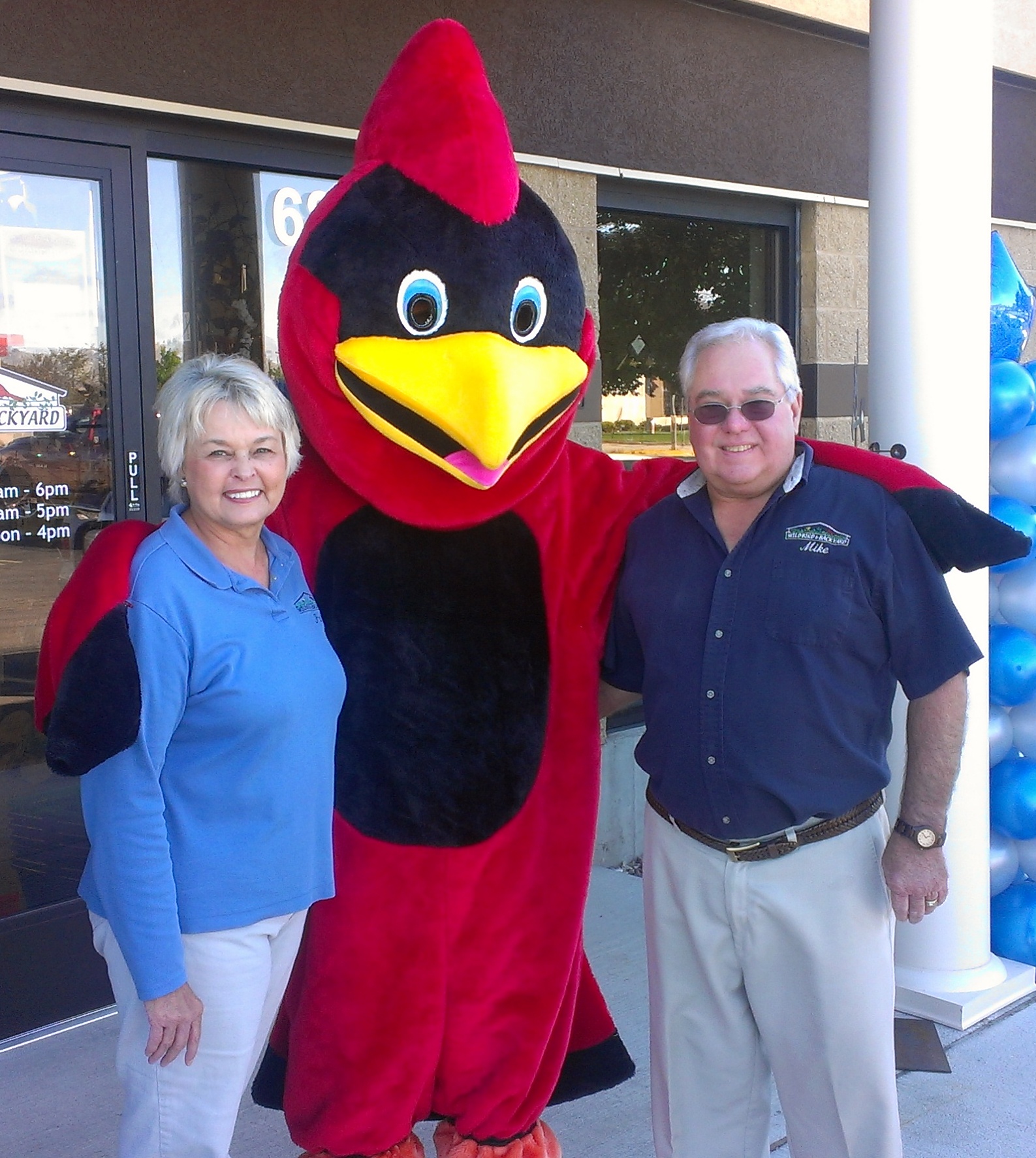
It was a busy Fall at Wildbird & Backyard; we hope you were 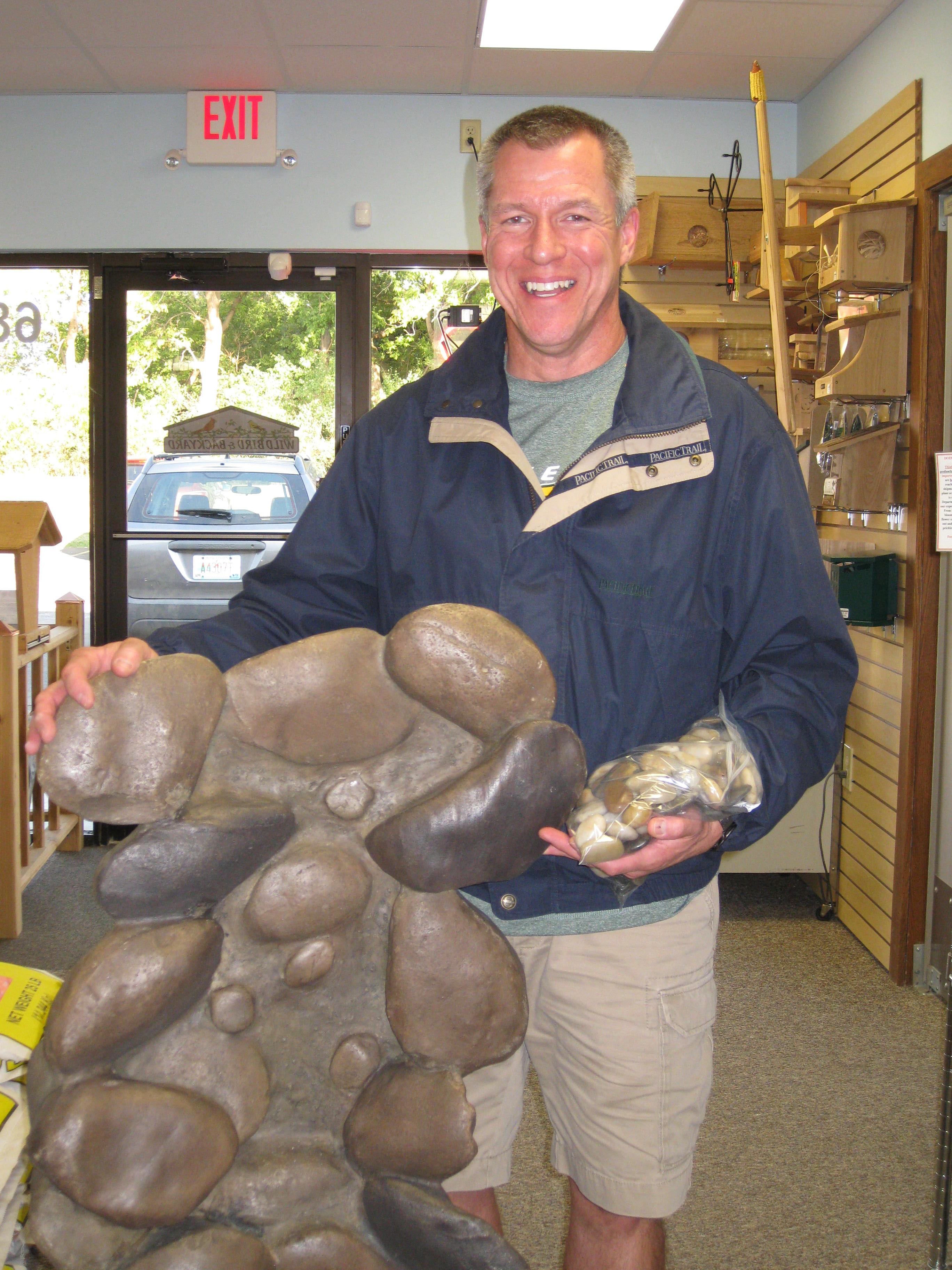 ableto join us for the many exciting events, filled with contests and prize drawings. In September we celebrated our Grand Re-Opening. Thanks go out to Skip Willis from FM station WVBO who had a live radio broadcast from our store that day. Skip is always a pleasure to have in our store and we thank him for donating items to our Prize Basket. With purchases that day, everyone was able to "Spin to Win". The spinner was filled with opportunities to either win a Gift Card or pick from an assortment of wrapped gifts in the Prize Basket. Over 80 customers walked away with an extra gift to celebrate our Grand Re-Opening. There was a "Name the Cardinal Contest" and the winning name is SQUACK, won by Nola Wood. Squack was a lively part of our day, waving and dancing in front of the store, posing with people for photo opportunities and generally being the talk of the town. Nola won a Solar Chime for her entry. In the general drawing we had a heated bird bath, various bird feeders, Thayer commuter Field Guides and a backyard Babbling Brook. Steve Gatza was the winner of the brook - Congratulations to all our winners!! ableto join us for the many exciting events, filled with contests and prize drawings. In September we celebrated our Grand Re-Opening. Thanks go out to Skip Willis from FM station WVBO who had a live radio broadcast from our store that day. Skip is always a pleasure to have in our store and we thank him for donating items to our Prize Basket. With purchases that day, everyone was able to "Spin to Win". The spinner was filled with opportunities to either win a Gift Card or pick from an assortment of wrapped gifts in the Prize Basket. Over 80 customers walked away with an extra gift to celebrate our Grand Re-Opening. There was a "Name the Cardinal Contest" and the winning name is SQUACK, won by Nola Wood. Squack was a lively part of our day, waving and dancing in front of the store, posing with people for photo opportunities and generally being the talk of the town. Nola won a Solar Chime for her entry. In the general drawing we had a heated bird bath, various bird feeders, Thayer commuter Field Guides and a backyard Babbling Brook. Steve Gatza was the winner of the brook - Congratulations to all our winners!!
 Bovano Day was held on Saturday, October 27. Once again we were very pleased to host Mr. Jim Flood, President of Bovano. Jim brought over $10,000 of Bovano for display and purchase, designs we normally don't have room to display in our store. In addition to discounted pricing on Bovano pieces we had a drawing for 2 Bovano scuptures. Winners on Bovano Day were Roger Berg and Jane Hansen. Thanks to all who participated in making Bovano Day a great day. Jim enjoyed meeting all of you and hearing your Bovano stories - he's looking forward to have the opportunity to join us again. Congratulations to all the winners. Bovano Day was held on Saturday, October 27. Once again we were very pleased to host Mr. Jim Flood, President of Bovano. Jim brought over $10,000 of Bovano for display and purchase, designs we normally don't have room to display in our store. In addition to discounted pricing on Bovano pieces we had a drawing for 2 Bovano scuptures. Winners on Bovano Day were Roger Berg and Jane Hansen. Thanks to all who participated in making Bovano Day a great day. Jim enjoyed meeting all of you and hearing your Bovano stories - he's looking forward to have the opportunity to join us again. Congratulations to all the winners.
Bird Questions and Answers
Cornell Lab of Ornithology Answers Bird Questions
Q. Yesterday evening around dusk I watched hundreds and hundreds of birds flying over my house. What were they?
A. That depends on what they looked like! They could have been blackbirds, grackles, cowbirds, crows, nighthawks, robins, or any other number of species that flock. At the end of summer, when birds finish breeding, many species become more social and join flocks. In the evening, hundreds of them may travel toward roosts and spend the night together.
Q. There's a strange partly white bird in my yard. It looks like a junco (or other species) except for some completely white feathers on its head and wing. What is it?
A. If it looks like a junco and hangs around with juncos, it probably is a junco, only this one is what we call a partial albino. Sometimes when skin tissue is injured, new feathers grow in white, and sometimes for genetic or other reasons birds don't produce pigments in patches of their skin tissues.
This can happen with any bird species—you might see a pure white bird shaped like a Blue Jay, or a European Starling whose plumage color looks much paler then usual, or a ghostly white House Wren. Most likely the oddly colored bird really is the more common bird you think it is. Remember that size, shape, and behavior often help to identify a bird even when its plumage looks odd. Comparing the shape of a strange bird with other birds nearby can be very helpful.
Q. Do birds sleep, and how?
A. Yes, birds sleep. Most songbirds find a secluded branch or a tree cavity, fluff out their down feathers beneath their outer feathers, turn their head to face backward and tuck their beak into their back feathers, and close their eyes.
Waterbirds sometimes sleep in the water. Some sleep on tree branches or in cavities, too. Some ducks can be literally half asleep—they close one eye and allow one half of their brain to sleep while the other eye and half of the brain is engaged in watching for predators.
Molting: Give us New Feathers, Please
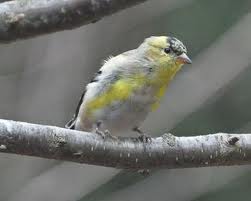
Did you notice that some birds may have been scarcer over the past weeks? Maybe it has been more difficult to identify familiar birds, blurred markings and colors you didn’t expect? There may be a simple explanation – molting.
Molting is a process of shedding and regrowing feathers. It occurs in response to a mixture of hormonal changes brought about by seasonal changes. Adult birds are shedding their worn out feathers from this year’s breeding season and growing new, strong, warm feathers to see them through the winter.
Bird feathers wear out during a bird’s busy year. Flying, rubbing against neighboring feathers or trees, general weakening due to exposure to the sun, along with parasites, such as feather lice, all cause damage to feathers. For what ever the reason dark feathers wear more slowly than white ones.
Feathers grow from follicles in the skin (like hair) and the growth of a new feather from the bottom of the follicle pushes the old one out. The process is a gradual one and occurs in sequence across an area of skin to ensure that there are no “bald” patches. This changing of plumage takes a lot of energy, so the timing in fall makes sense. Birds are done with the hectic chores of raising nestlings and there’s plenty of food to be used for the energy of molting. During molting there will be lost heat when feathers are shed, affecting insulation, and when flight feathers are lost, more energy may be required for flight. This is the reason why many birds become inconspicuous for a time as they may be more vulnerable to predation during their molting period.
All birds molt, but each species has a different molting cycle. Some birds molt only once per year, while other species may molt several times a year, most often to exchange showy breeding plumage for more camouflaged non-breeding plumage, or as young birds outgrow their down and mature into their adult plumage. Some birds also molt continuously throughout the year, gradually replacing all their feathers over a longer period of time. A typical molting pattern is symmetrical on both sides of a bird’s body. During this time they may look injured, ragged or scruffy due to missing patches of feathers, but molting is not a painful or harmful condition. At this time of the year, think of it as replacing their summer feathers for warmer, more insulated, winter feathers.
Mike's Message
We can hardly believe that it’s been four months since our store move. Many have questioned how it’s been at this new location and answering in one word, Fantastic! We are meeting many new people, some of them saying they were born and raised in Appleton and never knew Wildbird & Backyard existed. It has been fun getting to know them and solving their squirrel problems.
We’ve added to our staff and I’d like to introduce Cathy Staeven. A former librarian in the Appleton School system, Cathy brings her bright smile, enthusiasm and love of birds. She will be especially helpful during the upcoming Christmas season as we expand our store hours. Welcome, Cathy.
Beginning Thanksgiving week through Friday, December 21, we will be open with extended hours, until 8pm each Monday, Wednesday and Friday. The hours remain unchanged for the remaining days of the week. We hope these extended hours will help you with your shopping needs and busy schedules as the holidays approach. Please only use the front door after 6pm.
As noted above in this newsletter, our Christmas Seed Houses are now in stock. The larger houses have a useable bird house underneath the birdseed for use after the seed has been eaten. They are unique and make wonderful Christmas gifts (along with the other Christmas shapes and pecan wreaths). We only receive one shipment and when they are gone, they are gone till next year at this time. We’ve purchased a larger quantity than in the past but we expect to sell out long before Christmas. Shop early for the best selection.
Pat and I, along with our great staff, Dave, Bob, Nancy and Cathy, wish you all a very wonderful holiday season and thank you once again for your loyal patronage. We are blessed to have great customers and friends.
Happy Birding, Happy Winter, Mike
Special Customer Coupons!
|